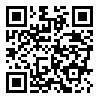Introduction: Patient transfer is one of the common nursing tasks which could protect patients from being injured and as well as nurses from adverse health issues such as musculoskeletal disorders, if it is carried out perfectly. The aim of this study was to evaluate the effect of patient transfer method training to nursing staff on its implementation.
Methods: In this pre and post quasi-experimental study, 20 nursing personnel of Khatam-Ol-Anbia Hospital were participated based on purposeful sampling method. The intervention included a three-day workshop in which the theory and practice of patient transfer method was trained and followed by group and individual performance of the participants. The patient transfer method scores were calculated before and after the workshop using patient transfer assessment instrument (PTAI) and finally data was analyzed by SPSS 19 software.
Results: Statistical analysis showed that the mean of patient transfer method increased (from 36.6 ± 16.4 to 89 ± 8.1), which was statistically significant (P < 0.001). In addition, before the intervention most of the participants’ patient transfer scores were poor in terms of ergonomics level, which improved to a good level after the intervention.
Conclusions: The results showed that the patient transfer method training from bed to wheelchair and vice versa can improve nurses’ skills. Therefore, training the correct (ergonomics) method which combines proper body postures and equipment can lead to better performance and prevent adverse health issues among nurses and increase patient safety as well.
Received: 2016/07/26 | Accepted: 2016/07/26 | Published: 2016/07/26
| Rights and permissions | |
 |
This work is licensed under a Creative Commons Attribution-NonCommercial 4.0 International License. |



